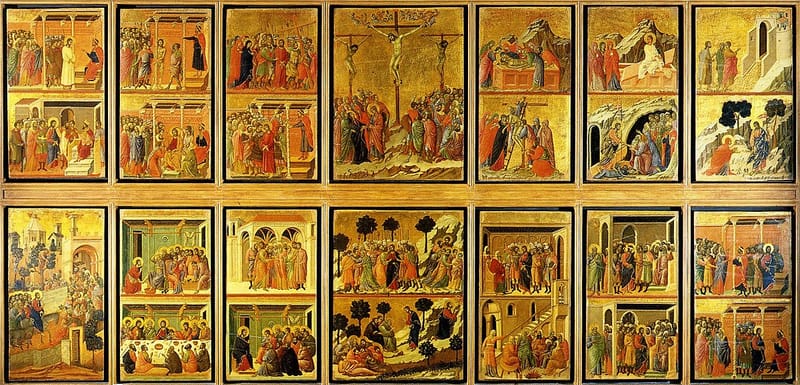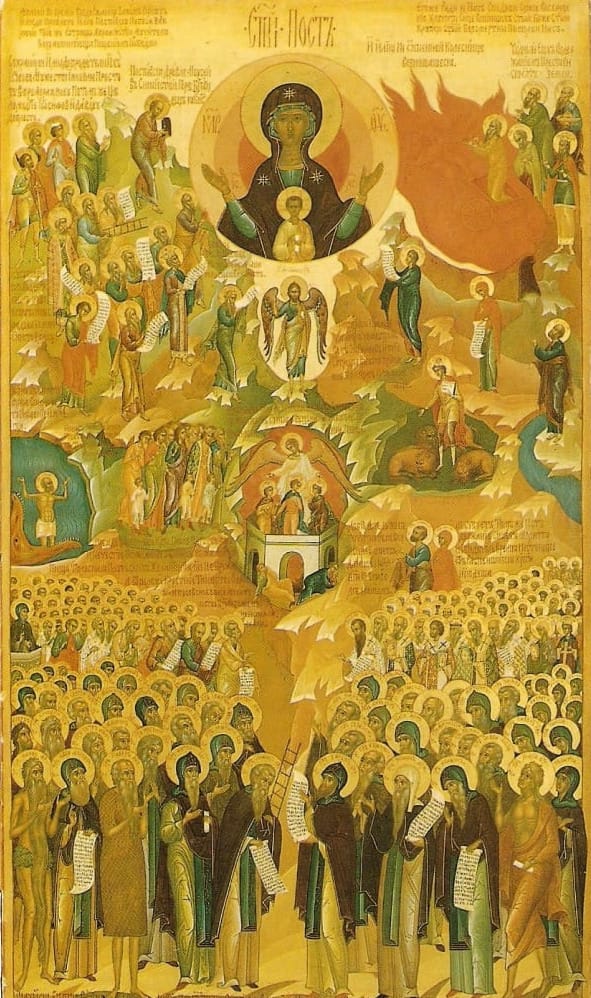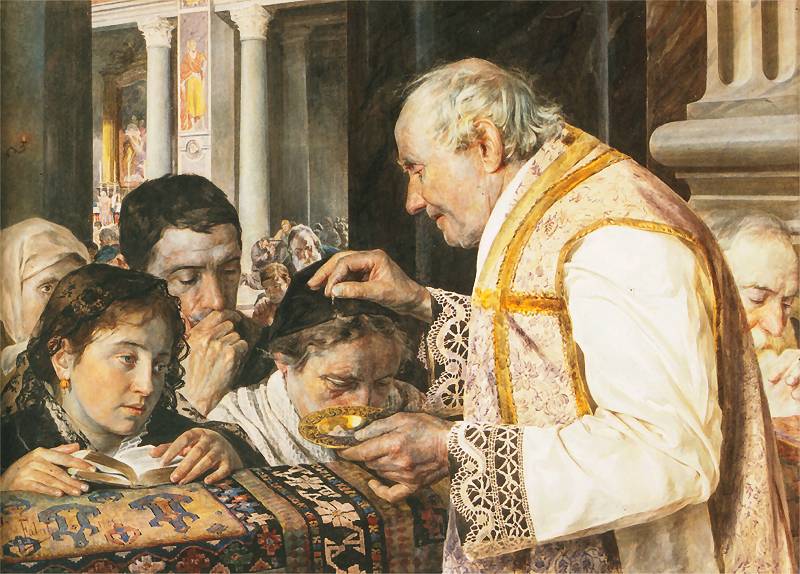Over Lent, Five Books for Catholics has recommended a variety of books, along with some sacred music and art, for the liturgical season. Some of these are also superb sources of spirituality for Holy Week.
Five Books for Catholics may receive a commission from qualifyng purchases made using the affliate links in this post.First, there are the paintings of the Passion, from Duccio di Buoninsegna’s Maestà, which featured in last week’s article.
Through them, Duccio incites us to contemplate in prayer the Lord’s Passion by impressing the various episodes more vividly upon our imagination.
Sacred music can be equally powerful at rendering the words of Scripture more movingly. It unpacks and conveys the emotional import of the words through the artful use of melody, rhythm, harmony, and counterpoint.
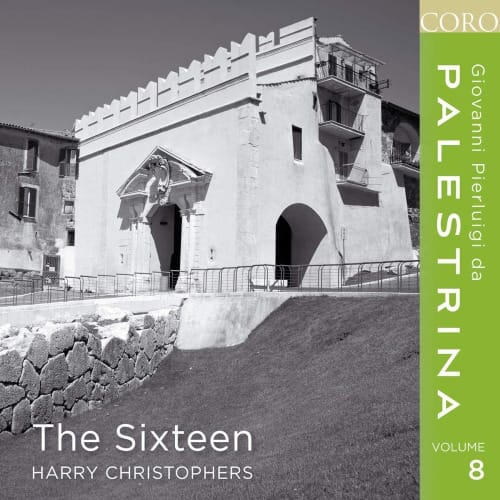
The sacred music recommended for Lent was the collection of penitential motets that featured in volume four of The Sixteen’s Palestrina series. While it is appropriate for Holy Week, even more apt are the motets and offertories of volume eight. They focus on the Eucharist and its institution during Holy Thursday. For example, Ego sum panis vivus [“I am the living bread] (track 1) and Caro mea vere est cibus [“My flesh is truly food”] (track 10) settings of pericopes from Christ’s teaching on the Eucharist in the John 6. Fratres ego enim accepi (1 Corinthians 11:23-25) (track 2) and Accepit Jesus calicem (track 3) are settings of the words of the institution of the Eucharist. The offertory Sacerdotes Domini (Leviticus 21:6) (track 12) and the hymn Pange lingua (track 17), though written for the Feast of Corpus Christi, are also suitable for the Mass of the Lord’s Supper on Holy Thursday. The disc also includes one of Palestrina’s 104 settings of the Common of the Mass (tracks 4-9): that based on music from his Eucharistic motet Fratres ego enim accepi.
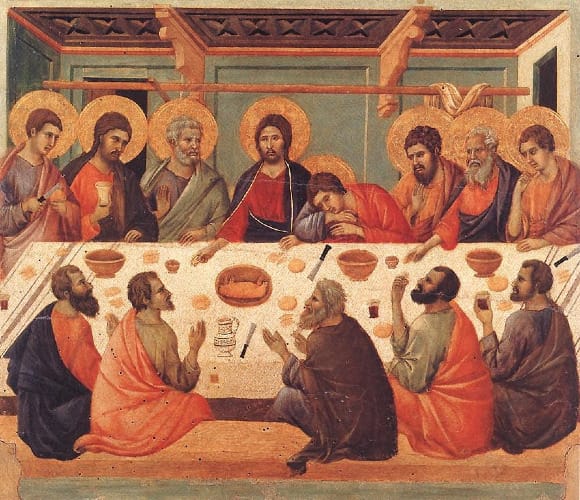
These works by Palestrina were created for liturgical celebrations, as were Duccio’s paintings of the Passion, which belonged to the retro of the altarpiece for the Cathedral of Sienna. They point us toward the liturgy as the place where we truly encounter Christ in his mysteries.
So does the work which has been our main guide during Lent: the Sermons for Lent and the Easter Season of St. Bernard of Clairvaux. The homily is an integral part of the liturgical action and, with their holy lives, the saints are, in a certain sense, the main interpreters of Scripture.
St. Bernard’s sermon for Wednesday of Holy Week, “On the Lord’s Passion,” is particularly worth reading, and especially relevant is his opening exhortation.
“Stay awake, brothers! Do not let the mysteries of this time pass through you fruitlessly. Blessing abounds here.”
As St. Bernard reminds us:
“Truly, during this holy week all Christians should live in a holy way, show modesty, cultivate humility, and array themselves in seriousness—either more than your usual practice or contrary to it!—so that they are seen to suffer in --some degree with the suffering Christ.”


